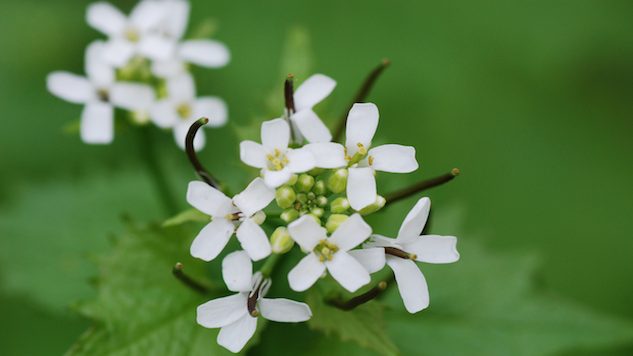7 Foods That Can Help Save the World

If you’ve kept your eye on the news since 45’s inauguration, it’s frighteningly obvious the environment needs our help more than ever. From calling climate change a hoax to massive budget cuts for environmental agencies and programs, green-lighting the Dakota Access Pipeline and asking the EPA to reconsider the Clean Water Act, we, as individuals, might just be the last line of defense.
For those of us hungry for change, there’s a few ways we can eat our way to a better world—or at least try. We have the power to fight back with our stomachs, plates, knives and forks by choosing the foods we spend our money on and put in our mouths. This is by no means a definitive list, but it’s a start. Remember, America is a country of supply and demand, so if you don’t see environmentally-friendly items on the menu or on the shelves, ask for them—repeatedly.
Whether it’s to take on global warming or make a dent in that feisty invasive species, we can actually help save the world, one bite at a time.
1. Lionfish
The venomous spines of a lionfish may look majestic behind the glass of an aquarium, but this invasive species, native to the Indo-Pacific region, has quickly taken over the east coast reef systems of North America. With no natural predators and an undiscerning appetite for anything that will fit into its mouth, the lionfish is rapidly reproducing and decimating up to 95 percent of native Atlantic and Caribbean Sea reef populations. Lucky for us, they are delicious, and our plates have the power to help rein in these self-appointed Kings of the Reef.
Likened to snapper, grouper, and sometimes, even lobster, you can catch a taste of this prickly predator on menus from Panama to New York, or pick it up fresh from select Whole Foods stores.
2. Impossible Foods’ Burger Photo courtesy of Impossible Foods
Photo courtesy of Impossible Foods
Unlike most plant-based food products, Impossible Foods’ target demographic isn’t vegans or vegetarians—it’s meat-eaters. It’s no secret the meat and dairy industries are destroying the environment, but that didn’t stop us from shamelessly choking down 214.3 pounds of meat and 627 pounds of dairy per person in the U.S. during 2016 and 2015, respectively. Why? Well, finding suitable substituted has seemed near impossible—until now. Enter the Impossible Burger, a plant-based, bleeds-like-beef product that browns, sizzles, feels, smells, and, by all accounts, tastes like the real thing. Gorge guiltlessly knowing that it emits an eighth of the greenhouse gases and requires just a fraction of land and water compared to animal-based beef burgers.
You can taste the future at 11 restaurants scattered around NYC, Los Angeles and the Bay Area, though the company hopes to expand to 1,000 restaurants by the end 2017.
3. Garlic Mustard
These days garlic mustard (Alliaria petiolata) is considered a pesky, hard-to-eradicate wild weed whose toxic roots poison the soil for native plants. Most people just mow over it without a second thought. But, for the early European settlers responsible for introducing the plant to North America, it had many uses. They used it to battle erosion, treat ulcers and gangrene and as a tangy, garlicky cooking herb that supplied a healthy dose of vitamins A and C. One of the only ways to be sure the tenacious plant can’t reseed is to isolate and dispose of it completely. Our stomachs seem like the perfect place.
-

-

-

-

-

-

-

-

-

-

-

-

-

-

-

-

-

-

-

-

-

-

-

-

-

-

-

-

-

-

-

-

-

-

-

-

-

-

-

-









































